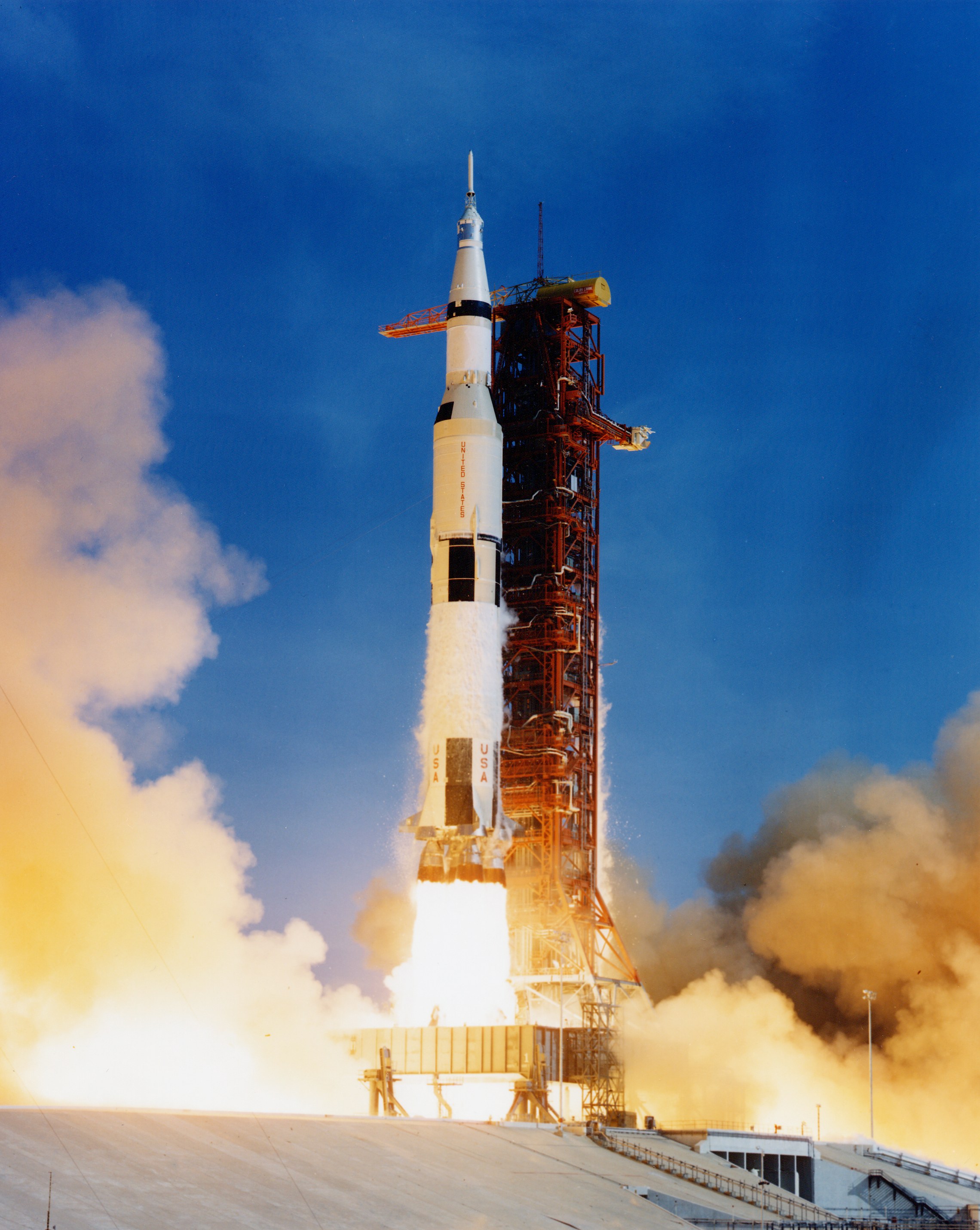16.1: Old Hardware, New Hardware
In 1966, the Apollo Guidance Computer was developed to make the calculations that would put humans on the Moon.
Your teacher will give you advertisements for different devices from 1966 to 2016. Choose one device and compare that device with the Apollo Guidance Computer. If you get stuck, consider using scientific notation to help you do your calculations.
 Apollo 11 Saturn V lifting off on July 16, 1969
Copyright Owner:
NASA (The Project Apollo Image Gallery)
License:
Public Domain
Via:
Wikimedia Commons
Apollo 11 Saturn V lifting off on July 16, 1969
Copyright Owner:
NASA (The Project Apollo Image Gallery)
License:
Public Domain
Via:
Wikimedia Commons
- Which one can store more information? How many times more information?
- Which one has a faster processor? How many times faster?
- Which one has more memory? How many times more memory?
For reference, storage is measured in bytes, processor speed is measured in hertz, and memory is measured in bytes. Kilo stands for 1,000, mega stands for 1,000,000, giga stands for 1,000,000,000, and tera stands for 1,000,000,000,000.